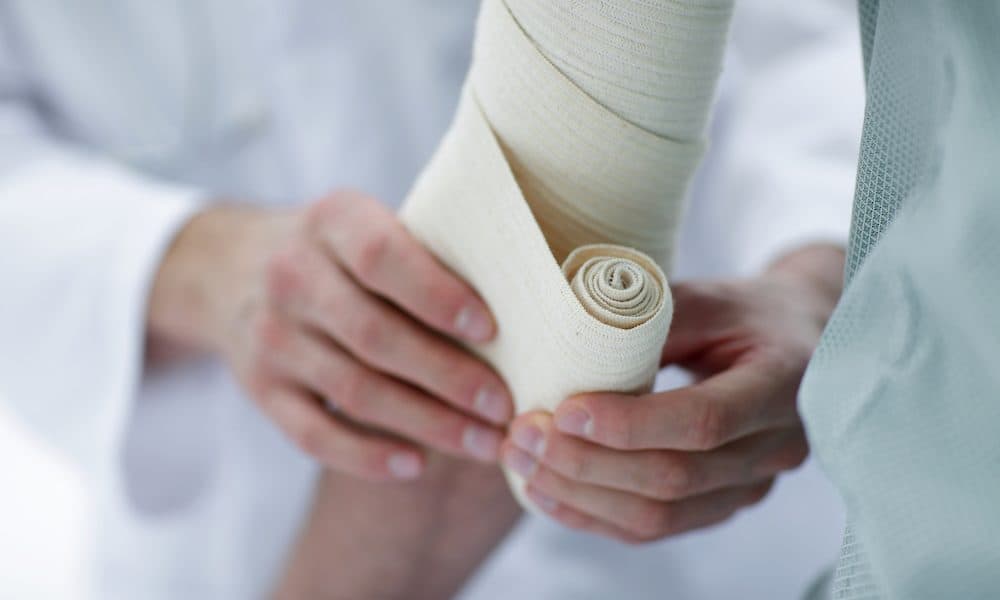Smart bandage technology is ‘revolutionising patient care’

Ravinder Dahiya is an IEEE fellow and professor of electronics and nanoengineering at the University of Glasgow.
Dahiya spoke to Health Tech World about smart bandage technology and how it is supporting telemedicine.
What is smart bandage technology?
Smart bandages are a relatively recent innovation which are revolutionising patient care by reducing the need for hospital visits.
Smart bandages are flexible, adhesive patches, which can be used to apply pressure to help a wound heal or allow monitoring during the healing process.
They use sensors to measure the strain being put on skin, while monitoring the patient’s temperature.
Other types of sensors (eg. pH sensors) can also be included in the smart bandage, particularly to monitor the healing process.
Not only does this speed up the healing process, but the readings can also be sent to healthcare workers via an app or smartphone.
How can it be used during diagnosis?

Ravinder Dahiya, IEEE fellow and professor of electronics and nanoengineering at the University of Glasgow
When it comes to diagnosis, smart bandages can monitor temperature and strain, which has proven useful when it comes to identifying respiratory diseases.
They also use low-power sensors, and the interface on the bandage can also directly operate from the energy of a near-field communication harvester.
Additionally, embedded temperature sensors can access information, such as body temperature and respiratory volume, two parameters are hardly ever combined for the assessment of wounds.
In fact, this makes smart bandages one of the most innovative wearable devices to enter the healthcare industry in recent years.
How can it speed up the healing process?
Smart bandages could use a variety of techniques to speed up the healing process.
For example, they use skin substitutes for wounds that are hard to heal, electroceuticals with piezoelectric materials – based dressings, and negative-pressure therapy to increase blood flow while keeping the wound moist.
A compression bandage which applies the correct amount of pressure has the ability to make the healing process a lot faster.
How is wearable technology currently supporting telemedicine?
Wearables are currently supporting telemedicine by providing an accurate measure of vital physiological parameters.
Artificial intelligence (AI), combined with rich sensor data, has been a key development in recent years.
In fact, it has significantly enhanced efficiency throughout the healthcare industry, particularly within the UK.
There are other areas around the world where health infrastructure is not as available, but it’s expected that wearable sensor technology will help leapfrog the traditional bottleneck in the way of reaching more remote areas.
Are there any downsides to its use, or advances still needed?
Despite the benefits, wearable sensors such as smart bandages are technical devices, which could generate a huge amount of data. There is need to manage this data properly to obtain conclusive outcomes.
Data analytics and AI based on the inputs from clinicians can help extract useful information from sensory data.
In turn, this can help predict the growth of diseases, improvements with diagnosis or even prevent a disease completely by predicting in advance.
Where do you see this technology going in the future?
Wearables, along with other sophisticated technologies such as electronic skin working with big data, are transforming the healthcare sector.
Based on the inputs of experienced clinicians, in the future, devices such as smart sensors will be able to help extract useful information and enhance efficiency for most healthcare workers.
This can help improvements with diagnosis, predict the growth of diseases, and even prevent a disease completely by predicting in advance.
With suitable haptic mechanism wearable systems could even allow clinicians to palpate and feel the body remotely, thus removing the need for frequent visits to hospitals.





